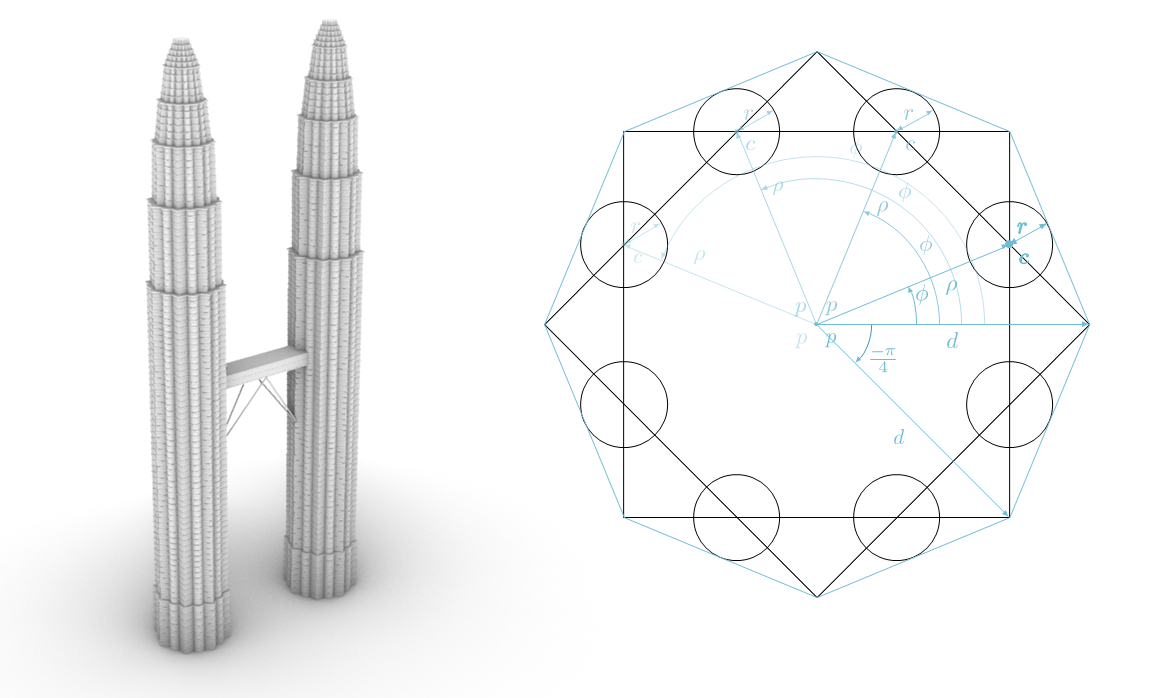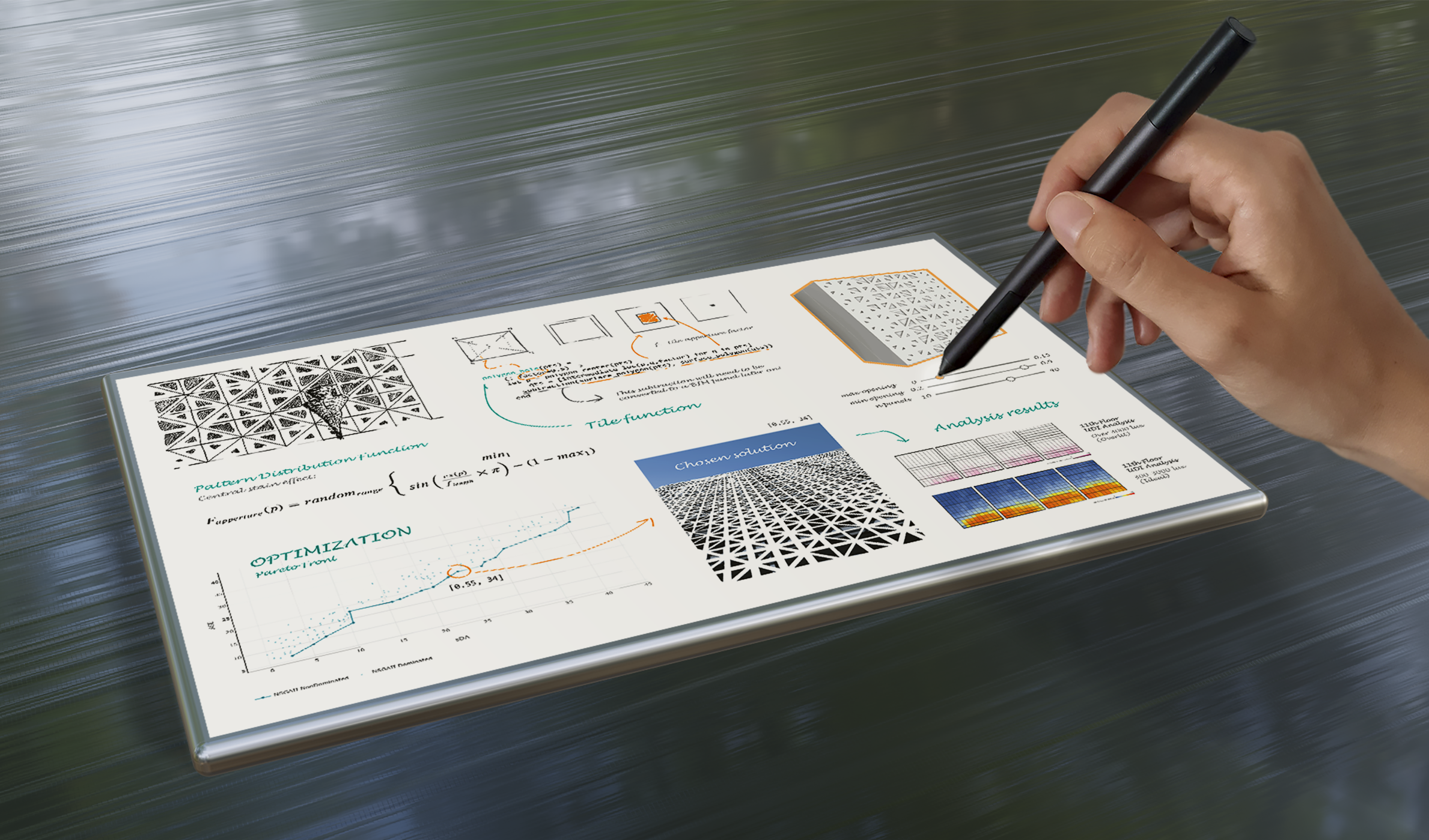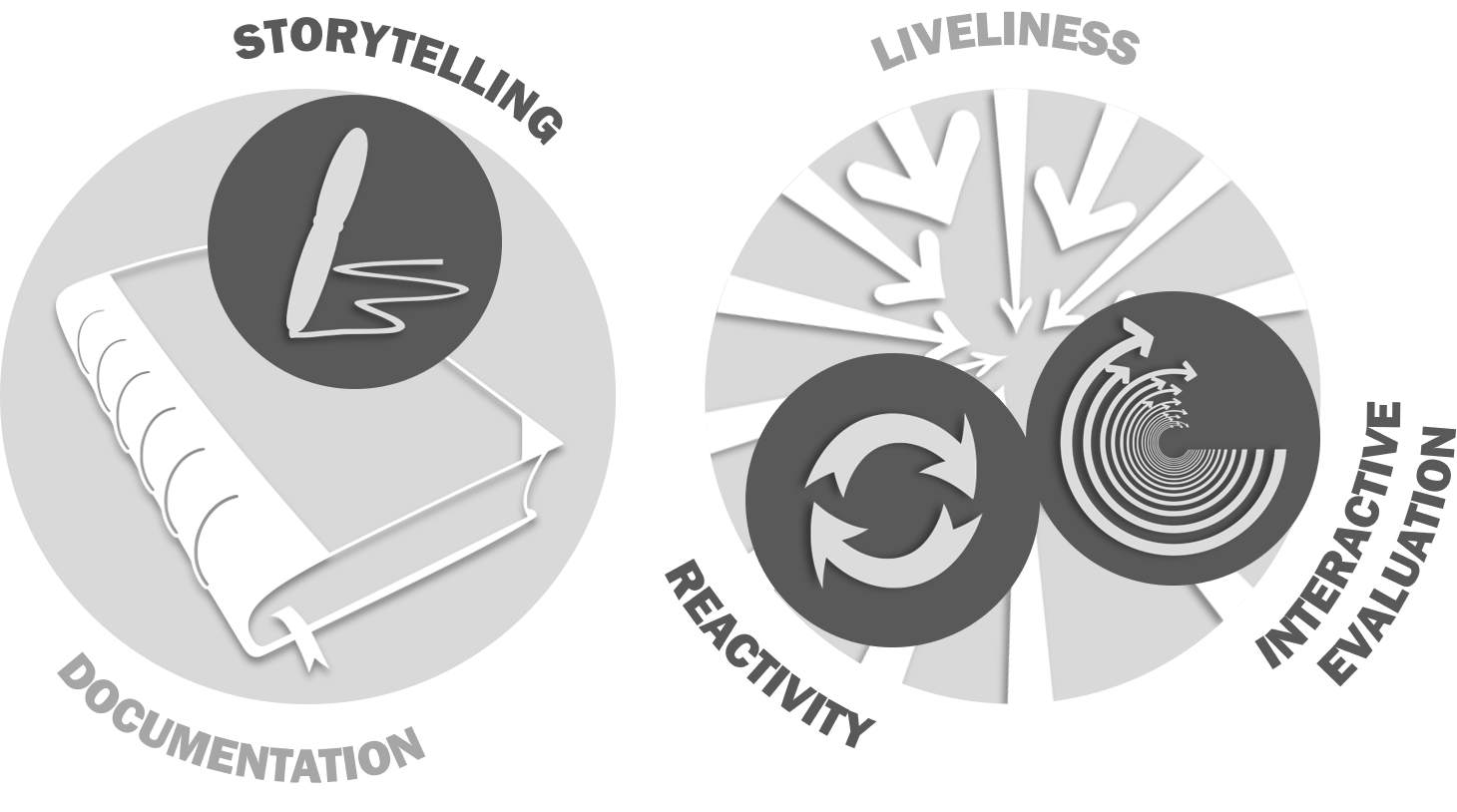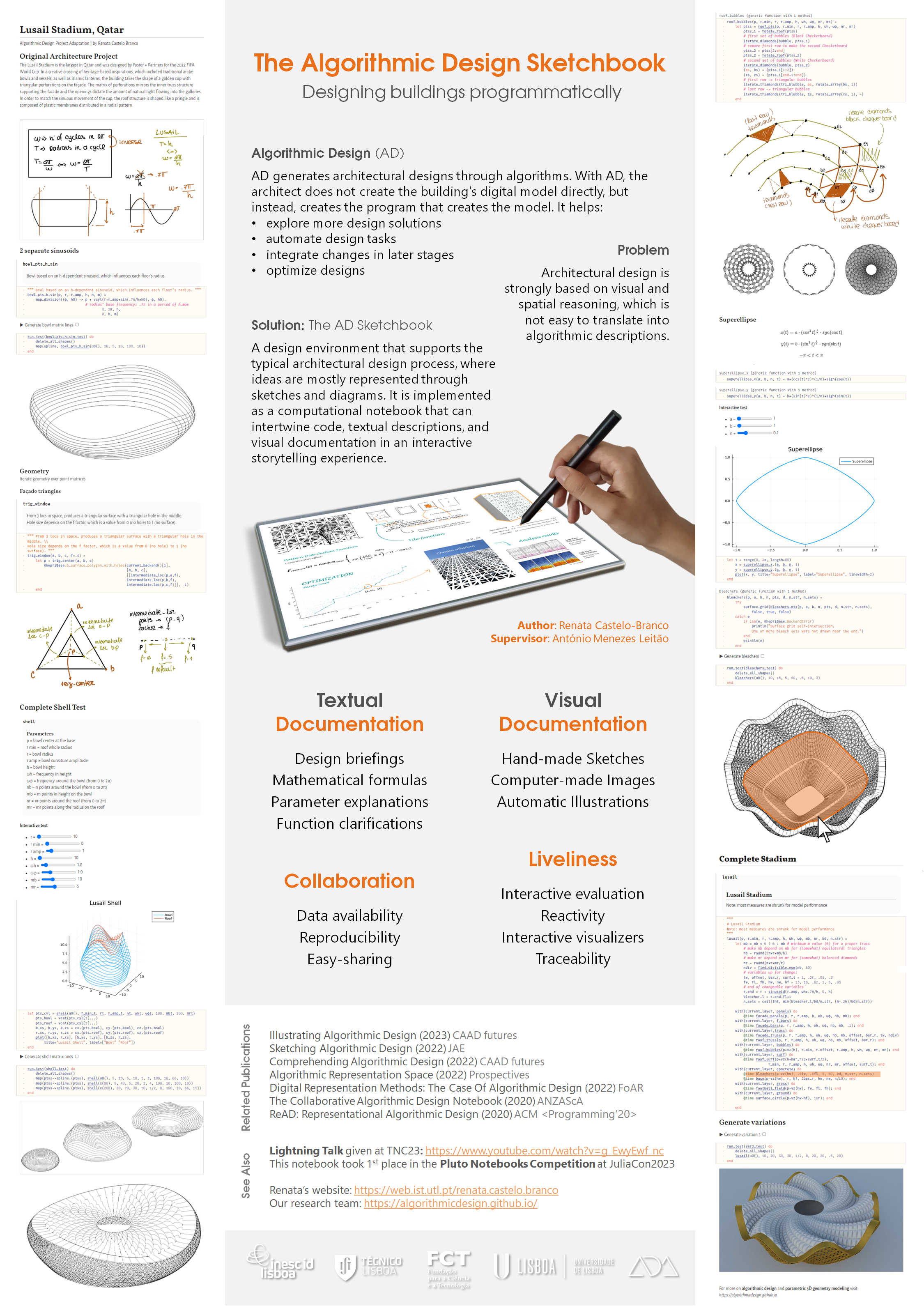Illustrated
Algorithmic Design
Publications
Algorithmic Design Explained: Decomposing parametric 3D problems into 2D visual illustrations
CAADRIA Conference: Accelerated Design
Singapore, 2024
Castelo-Branco, Renata & Caetano, Inês & Leitão, António
Abstract: Algorithmic Design (AD) is a promising approach that merges two distinct
processes - design thinking and computational thinking. However, it requires converting design
concepts into algorithmic descriptions, which not only deviates from architecture's visual nature,
but also tends to result in unstructured programs that are difficult to understand. Sketches or
diagrams can help explain AD programs by capitalizing on their geometric nature, but they rapidly
become outdated as designs progress. In ongoing research, an automatic illustration system was
proposed to reduce the effort associated with updating 2D diagrams as ADs evolve. This paper
discusses the ability of this system to improve the comprehension of AD programs that represent
complex 3D architectural structures. To understand how to best explain parametric 3D models using 2D
drawings, this research explores problem decomposition techniques, applying them in the visual
documentation of two case studies, where illustration aids different comprehension scenarios:
illustrating for future use, and illustrating while designing as part of the AD process.
Illustrating Algorithmic Design
Computer-Aided Architectural Design - Springer Cham
CAAD Futures Conference: Interconnections
Delft, The Netherlands, 2023
Castelo-Branco, Renata & Leitão, António
 Abstract: Architectural design is strongly based on visual and spatial reasoning,
which is not easy to translate into algorithmic descriptions and, eventually, running programs,
making it difficult for architects to use computational approaches, such as Algorithmic Design (AD).
One of the most pressing problems is program comprehension. To overcome it, we propose an automatic
illustration system for AD programs that produces annotated schemes of the program's meaning.
Abstract: Architectural design is strongly based on visual and spatial reasoning,
which is not easy to translate into algorithmic descriptions and, eventually, running programs,
making it difficult for architects to use computational approaches, such as Algorithmic Design (AD).
One of the most pressing problems is program comprehension. To overcome it, we propose an automatic
illustration system for AD programs that produces annotated schemes of the program's meaning.
The illustration system focuses on a basic set of geometric elements used in most
calculations to place geometry in space (points, distances, angles, vectors, etc.), and on the way
they are manipulated to create more complex geometric entities. The proposed system automatically
extracts the information from the AD program and the resulting illustrations can then be integrated
into the AD program itself, intertwined with the instructions they intend to explain.
This article presents the implementation of this solution using an AD tool to generate the
illustrations and a computational notebook to intertwine the program and the illustrations. It
discusses the choices made on the system's implementation, the expected workflow for such a system,
and potential future developments.
Sketching Algorithmic Design
Journal of Architectural Engineering - ASCE Library, 2022
Castelo-Branco, Renata & Caetano, Inês & Pereira, Inês & Leitão, António
 Abstract: In the last decades, architecture has experienced paradigm shifts prompted by new computational tools.
Algorithmic Design (AD), a design approach based on algorithms, is one such example. However, the architectural design practice is
strongly based on visual and spatial reasoning, which is not easy to translate onto algorithmic descriptions. Consequently, even
using tailored AD tools, AD programs are generally hard to understand and develop, independently of one's programming abilities.
To address this problem, we propose a methodology and a design environment to support AD in a way that is more akin to the
workflow typically employed by architects, who represent their ideas mostly through sketches and diagrams. The design environment
is implemented as a computational notebook, with the ability to intertwine code, textual descriptions, and visual documentation in
an integrated storytelling experience that helps architects read and write AD programs.
Abstract: In the last decades, architecture has experienced paradigm shifts prompted by new computational tools.
Algorithmic Design (AD), a design approach based on algorithms, is one such example. However, the architectural design practice is
strongly based on visual and spatial reasoning, which is not easy to translate onto algorithmic descriptions. Consequently, even
using tailored AD tools, AD programs are generally hard to understand and develop, independently of one's programming abilities.
To address this problem, we propose a methodology and a design environment to support AD in a way that is more akin to the
workflow typically employed by architects, who represent their ideas mostly through sketches and diagrams. The design environment
is implemented as a computational notebook, with the ability to intertwine code, textual descriptions, and visual documentation in
an integrated storytelling experience that helps architects read and write AD programs.
Comprehending Algorithmic Design
Computer-Aided Architectural Design, Springer Cham
CAAD Futures Conference: Design Imperatives - The Future is Now
Los Angeles, USA, 2022
Castelo-Branco, Renata & Leitão, António
 Abstract: Algorithmic Design (AD) allows for the creation of form through algorithms. Its inherent exibility
encourages the exploration of a wider design space, the automation of design tasks and design optimization, considerably
reducing project costs and environmental impact. Nevertheless, current AD uses representation methods that radically differ
from those used in architectural practice, creating a mismatch that is further exacerbated by the inadequacy of current
programming environments. This creates a barrier to the adoption of AD, demotivating architects from its use.
Abstract: Algorithmic Design (AD) allows for the creation of form through algorithms. Its inherent exibility
encourages the exploration of a wider design space, the automation of design tasks and design optimization, considerably
reducing project costs and environmental impact. Nevertheless, current AD uses representation methods that radically differ
from those used in architectural practice, creating a mismatch that is further exacerbated by the inadequacy of current
programming environments. This creates a barrier to the adoption of AD, demotivating architects from its use.
We propose to address this problem by coupling AD with adequate representation methods for designing complex
architectural projects. To this end, we explore three essential concepts: storytelling, interactive evaluation, and
reactivity. These concepts can be both complementary and mutually exclusive, which means compromises must be made to
accommodate them all. We outline a strategy for their integration with the AD work ow, highlighting the advantages and
disadvantages of each one, and pinpointing their intersection. Finally, we evaluate the proposed strategy using computational
notebooks as programming environments.
The Collaborative Algorithmic Design Notebook
ANZAScA Conference: Imaginable Futures - Design Thinking, and the Scientific Method
Auckland, New Zealand, 2020
Castelo-Branco, Renata & Caetano, Inês & Pereira, Inês & Leitão, António
 Abstract: Design studios are increasingly interested in collaborative Algorithmic Design (AD) practices.
However, AD uses algorithmic descriptions that are often difficult to understand and change, hindering the adoption of AD in
collaborative design. We propose improving collaborative AD by adopting a programming environment that allows for (1)
developing designs incrementally, (2) documenting the history of the design with visual artifacts, (3) providing immediate
feedback during the development process, and (4) facilitating the comprehension of collaborative AD projects. Given that
computational notebooks are currently being explored in scientific research to solve similar problems, in this paper, we adapt
the notebook workflow to support collaborative AD processes, outlining three main collaboration strategies. We evaluate
currently existing notebook environments regarding each of the strategies and the impact they have on the development of AD
projects.
Abstract: Design studios are increasingly interested in collaborative Algorithmic Design (AD) practices.
However, AD uses algorithmic descriptions that are often difficult to understand and change, hindering the adoption of AD in
collaborative design. We propose improving collaborative AD by adopting a programming environment that allows for (1)
developing designs incrementally, (2) documenting the history of the design with visual artifacts, (3) providing immediate
feedback during the development process, and (4) facilitating the comprehension of collaborative AD projects. Given that
computational notebooks are currently being explored in scientific research to solve similar problems, in this paper, we adapt
the notebook workflow to support collaborative AD processes, outlining three main collaboration strategies. We evaluate
currently existing notebook environments regarding each of the strategies and the impact they have on the development of AD
projects.
